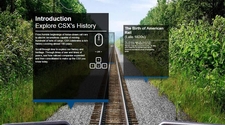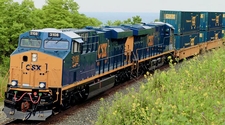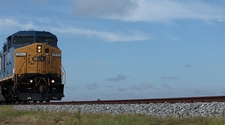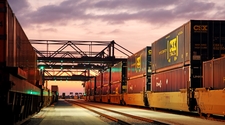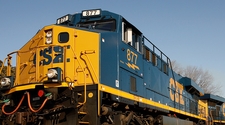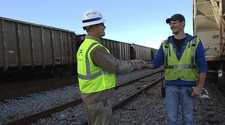Chemicals are an essential part of our everyday lives, and they need to be moved and handled safely. That’s why we work with our employees, customers, regulators and suppliers to deliver these products safely and reliably.
CSX is committed to increasing public transparency around the safe movement of hazardous materials on the company's 26-state network*, balancing publicly-available information with the ongoing need to protect rail security and customer proprietary information.
The transportation of hazardous materials is regulated by the U.S. Department of Transportation (DOT), the U.S. Department of Homeland Security, and the U.S. Transportation Security Administration. The DOT categorizes hazardous materials into nine classes. These classes dictate the necessary packaging, handling, signage (called placarding) and emergency response for different products. Learn more about the U.S. Department of Transportation’s classification and regulation of hazardous materials on their website.
Safety is always CSX’s first priority, and every decision we make is intended to move the freight entrusted to us from origin to destination without incident. For many years, CSX has been a leader in assembling an expert team to manage hazardous materials movements and to respond to hazardous materials incidents. Today, the CSX chemical safety and hazardous materials teams work closely with customers and local communities to train for and safely manage the movement of hazardous materials. CSX has hazmat managers and trained contractors deployed across the company’s network to facilitate strong relationships with first responders and other community leaders, and to reduce response time in the event of an incident.
Security is also a primary focus at CSX. CSX and the U.S. freight rail industry as a whole operate under a comprehensive and regularly tested Railroad Risk Analysis and Security Plan. In addition, the CSX Railroad Police and Infrastructure Protection departments help to ensure this security by monitoring shipments and working closely with other local, state and federal security and law enforcement agencies.
CSX also provides specialized training to better prepare first responders with their response to a rail-related incident. This training was made available to more than 3,600 emergency responders in 2022. Each year, the company conducts hands-on sessions, classroom training at local fire stations, exercises and table-top drills, web-based and self-study training courses. The hands-on and classroom safety training helps strengthen CSX's partnership with first responders and provides a higher level of emergency readiness.
Learn more about our safety programs and training. For more information about the hazardous materials safety commitment of the entire freight rail industry, visit the Association for American Railroads.
Hazardous Materials on the CSX Network
Moving hazardous materials by rail is the safest possible surface transportation solution and preferable to transporting them via highways. Chemical shippers prefer to move their products by rail. While not all hazardous materials are the same, CSX treats every hazardous material movement with the same high level of care and focus on safety.
It’s important to understand several things about transporting hazardous materials by freight rail:
- First, freight railroads are considered “common carriers” under U.S. interstate commerce laws, which means that railroads are legally required to move any freight – including hazardous materials – that is given to us by a customer in the proper, government-approved rail car or container. The chemicals moved by CSX are an important part of American commerce – for manufacturers, for businesses, and for consumers who use the products made by these chemicals.
- Second, hazardous materials make up a small fraction of the traffic moved by freight railroads.
- Third, CSX does not own the rail cars, including tank cars, in which these hazardous products are moved. These rail cars, which must meet strict federal regulations, are typically owned by the product manufacturer or rail car leasing companies.
It’s important to note that CSX puts the highest priority on the safe and reliable movement of all freight, with special emphasis on hazardous materials.
Please click here to view an interactive CSX system map.
*CSX completed its acquisition of Pan Am Systems, Inc., in 2022, expanding its network reach from 23 to 26 states.
Please note:
This content is for illustrative purposes and is not intended to fulfill regulatory disclosure or any other local, state or federal requirements. For regulatory matters and disclosure requests, or if you’re an emergency response, emergency planning or government official looking for more information about the hazardous materials CSX moves in your jurisdiction, please contact CSX at HazMatSafety@CSX.com.
First responders, learn more about AskRail, the railroad industry standard mobile web application with access to detailed information about trains in your jurisdiction, at www.askrail.us.


